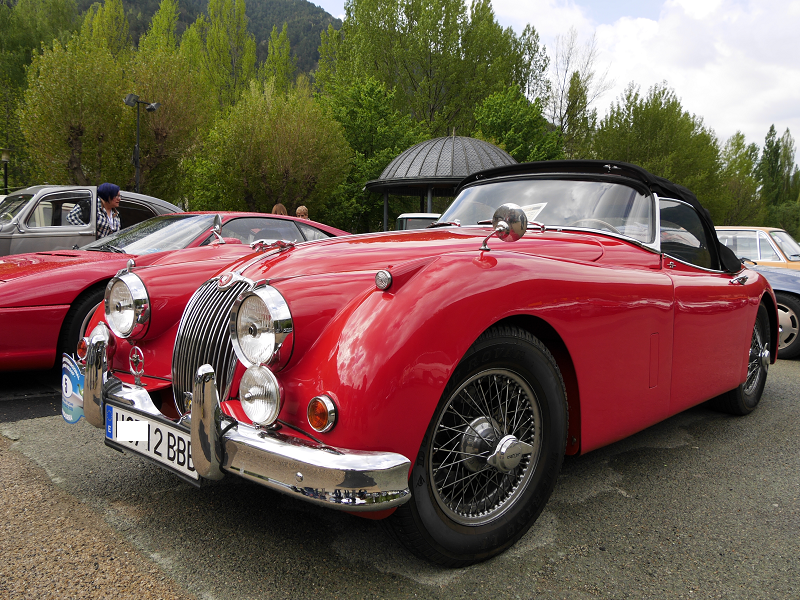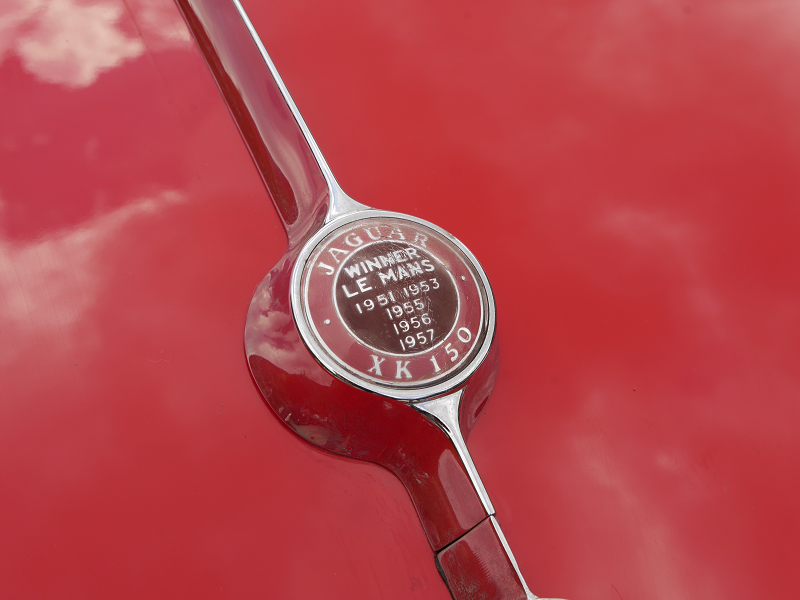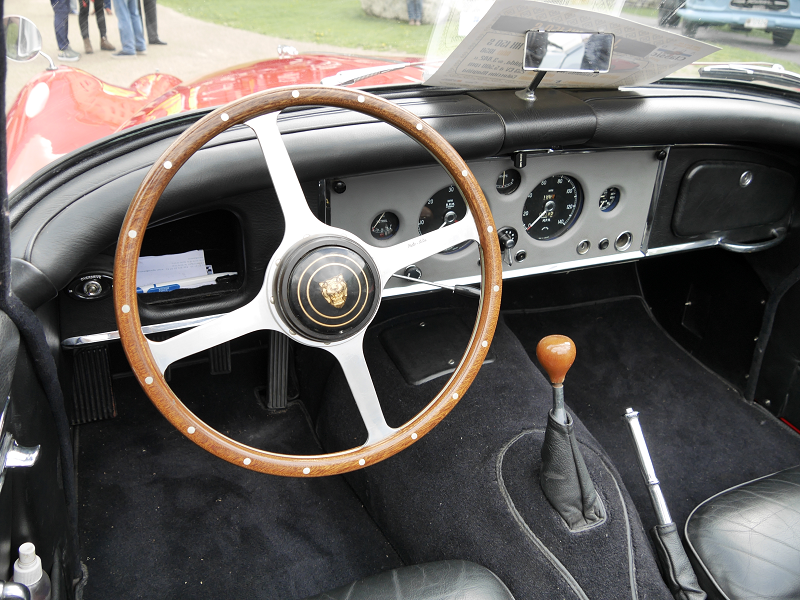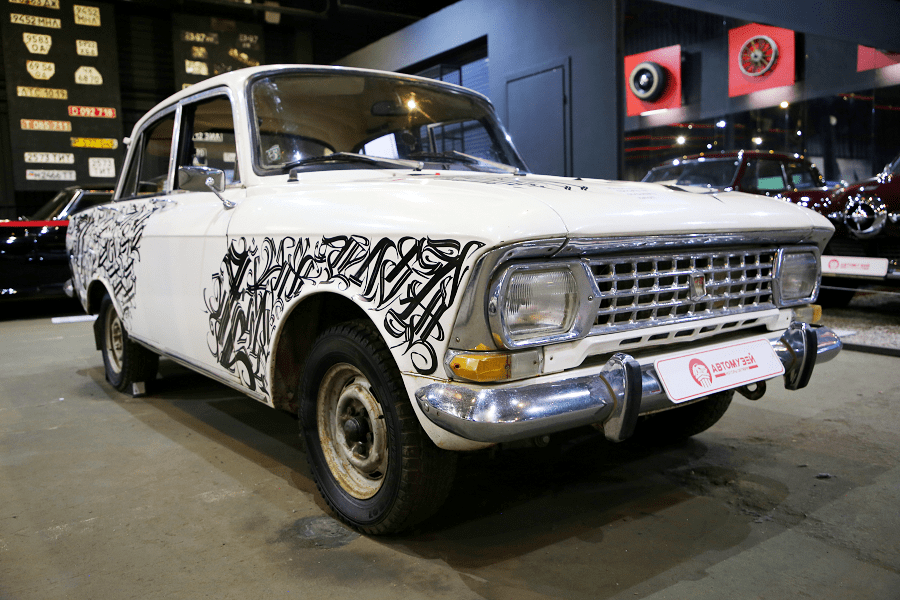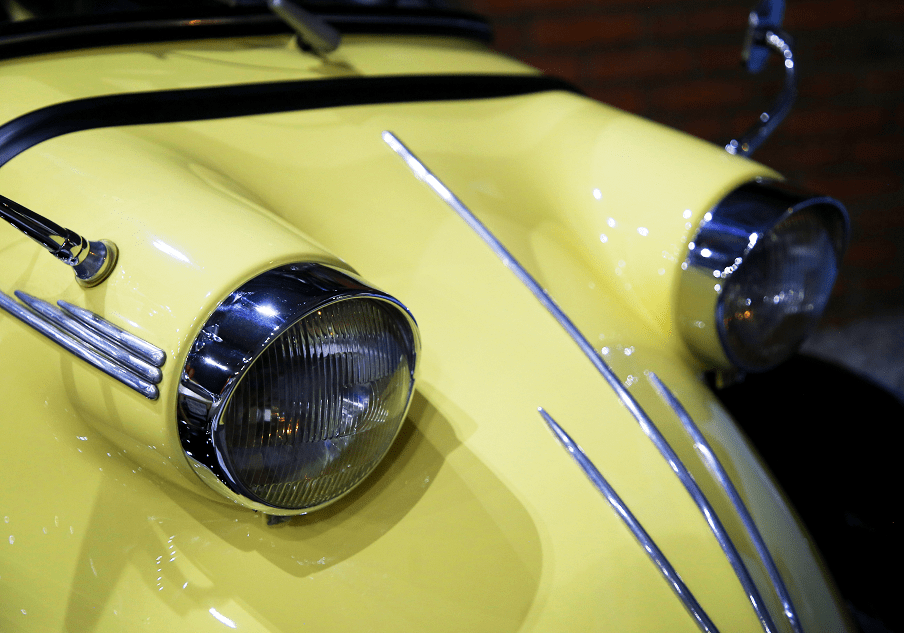The Jaguar XK150 is a sports car produced by Jaguar between 1957 and 1961 as the successor to the XK140. Le Mans winner 1951, 1953, 1955, 1956, 1957.
Initially it was only available in fixed head coupé (FHC) and drophead coupé (DHC) versions. The roadster without full weather equipment which had begun the XK line was launched as the XK150 OTS (open two-seater) in 1958. Minimal rear seats were fitted in the coupés. The open two-seater was fitted for the first time with wind-up windows in taller high-silled doors, but retained the very simple folding roof of its predecessors.
Announced in its home market in May 1957 the XK150 bore a family resemblance to the XK120 but was radically revised. Most visibly, a one-piece windscreen replaced the split screen, and the wing line carried higher and more streamlined at the doors. The widened bonnet opened down to the wings, and on the coupés the windscreen frame was moved forward 4 inches (102 mm) to make passenger access easier.
The car was available at various times in Red, Pearl Grey, White, Indigo Blue, Claret, Cotswold Blue, Black, Mist Grey, Sherwood Green, Carmen Red, British Racing Green, Cornish Grey, and Imperial Maroon.
In 1960 the 220 hp 3.8 litre engine fitted in the full-sized luxury Mark IX saloon since October 1958 became available. It was tuned to produce up to 265 hp in S models and propel an XK150 to 135 mph (217 km/h).
Production ended in October 1960 with 9,382 vehicles, including 2,265 Roadsters open-two seater OTS, 4,445 Fixed head coupés FHC and 2,672 drop head coupés DHC.



